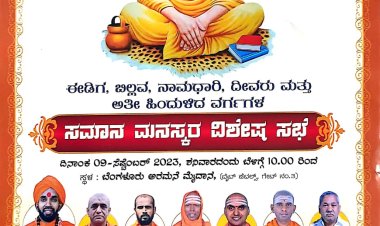T20 World Cup 2021: Starc's perfect yorker to Perera — another reminder of its beauty, lethality
T20 World Cup 2021: Starc's perfect yorker to Perera — another reminder of its beauty, lethality

There is no greater ignominy for a fast bowler, any fast bowler, than being slammed over his head for a straight six. When that fast bowler is named Mitchell Starc, one of the premier purveyors of left-arm lethal, it can be an especially bitter pill to swallow.
Starc whirled away, perhaps in disgust, perhaps with an inner half-smile, after Kusal Perera deposited him deep into the stands beyond long-on at the Dubai International Stadium on Thursday night. It wasn’t one of those cute slower balls off the front or the side or the back of the hand. It wasn’t a floater, pace off, trying to disrupt the batsman’s rhythm and timing. This was a proper, full-tilt delivery; perhaps, the only thing slightly wrong was the length. It was pretty much in the hitting arc of the Sanath Jayasuriya clone and Perera didn’t disappoint.
Most pacemen would have reacted with untold anger, driven by an ‘I-will-show-you-who-the-boss-is’ mindset. A near-instinctive need for aggression. The fast bowlers’ club would have advocated a snappy delivery aimed at the crest of the batsman’s helmet. After all, that’s what the quicks do, don’t they?
Starc isn’t just speedy, he is also intelligent. He perhaps second-guessed that the Sri Lankan left-hander would expect a bumper, and would therefore retreat mentally, if not physically, to the back foot. So, what did the Aussie do?
He produced what remains the most lethal delivery in limited-overs cricket – the well-directed, impossible-to-keep-out yorker, quick and straight and homing in as if radar-influenced. Perera had no answer to this extraordinary show of brilliance and courage from the big Australian. The slightest error in length would have attracted the maximum punishment from the pint-sized dynamo, but Starc nailed his execution, sending Perera packing with the most perfect ball. Whoever said revenge is a dish best served cold.
Perfect Starc yorker❤#AUSvSL pic.twitter.com/hOnxcmbwLj
— Mujeem (@AbdulMujeem4) October 28, 2021
As Perera trudged off disconsolately, it was impossible not to recall a similar magical ball from Starc to another left-hander, Ben Stokes, in the 2019 World Cup. Stokes was threatening to single-handedly make a match of the league fixture between the old enemies with England stuttering in their chase of 286.
He had breezed to 89, and even though the light at the end of the long, foreboding tunnel was at best dim, had raised visions of an extraordinary victory when the strapping man from New South Wales put all speculation to rest with the peach that the batsman was ill-equipped to negotiate. That was pretty much the game done and dusted at Lord’s.
Mitchell Starc with the exact same deliveries in different world cups.???? pic.twitter.com/oGmI2IniAj
— MK???????? (@kazmi12_) October 28, 2021
It wasn’t quite as cut and dried in Dubai on Thursday, though there is no doubting the impact Starc’s eviction of Perera had on the Sri Lankan innings.
The Asian nation had just lost Charith Aslanka to leggie Adam Zampa after a 63-run second-wicket stand with Perera who, after a quiet time in the Powerplay when was deprived of the strike, was threatening to return to his brutal best. Starc’s scorcher sucked the momentum out of the Sri Lankan innings; unable to recover from the loss of the two set batsmen in the space of six deliveries, the 2014 champions were forced to settle for 154 for six, perhaps 20 short of what they might have targeted on arguably the best batting surface of the tournament.
The pitches have been in sharp focus in the UAE since the start of the World Cup. In the recent past, they have tended to play low and slow, seriously discouraging uninhibited stroke-making. This time, they have been even more tired than usual, primarily because of the wear and tear from phase two of IPL 2021, which concluded just a couple of days before the start of the World Cup.
With a greater understanding of the nuances of the 20-over game, teams are now armed with bowlers who carry mystery with them, or with those that can come up with a veritable assortment of changes of pace. Both these variations have proved extremely effective in various games and particularly so when the ball has gotten older and softer. Almost imperceptibly, the yorker had gone from the bride to the bridesmaid.
And yet, it is this specialty that takes the pitch and the age of the ball out of the equation. It’s this variation that doesn’t rely on assistance from the surface or the atmosphere, though the slightest movement in the air isn’t unwelcome. It’s this delivery that shatters not just stumps but sometimes toes and always egos, the most thrilling offering that leaves a bowler’s hand.
Remember Shoaib Akhtar and his twin thunderbolts to Rahul Dravid and Sachin Tendulkar in the Asian Test Championship game in Kolkata in February 1999? Or, turning the clock back a decade and a bit, what about Kapil Dev’s takedown of Qasim Umar in the final of the World Championship of Cricket in 1985?
Actually, why travel that far back in time? How about the only ball Rohit Sharma has faced in this World Cup? The yorker with a pristine new ball is the hardest delivery because it is impossible to state with any certainty that the bowler has optimal grip on the slippery little orb. When it comes out nicely and homes in on the stumps – or the pad, like in Rohit’s case – it sends an indescribable jolt of electricity through the body.
Shaheen Shah Afridi’s first-over dismissal of Rohit was a thing of beauty, the perfect sync between mind and body and left shoulder and wrist and fingers. Not even the most blinkered Indian supporter would not have appreciated the sheer magic of the moment, even if it came at the expense of their vice-captain.
The yorker has been reduced to a poor cousin of change-ups in pace, of the surfeit of multiple versions of the slower ball, of banking on sleight of mind as much as sleight of mind. It’s up to men like Starc and Afridi to reignite the romance surrounding the yorker, because it is the regalest yet most primal weapon in the fast bowler’s armoury.
R Kaushik is a Bengaluru-based freelancer who has been writing on cricket for 30 years. He has reported on more than 100 Test matches and is the co-author of VVS Laxman's autobiography, 281 And Beyond.



 Admin
Admin 








































